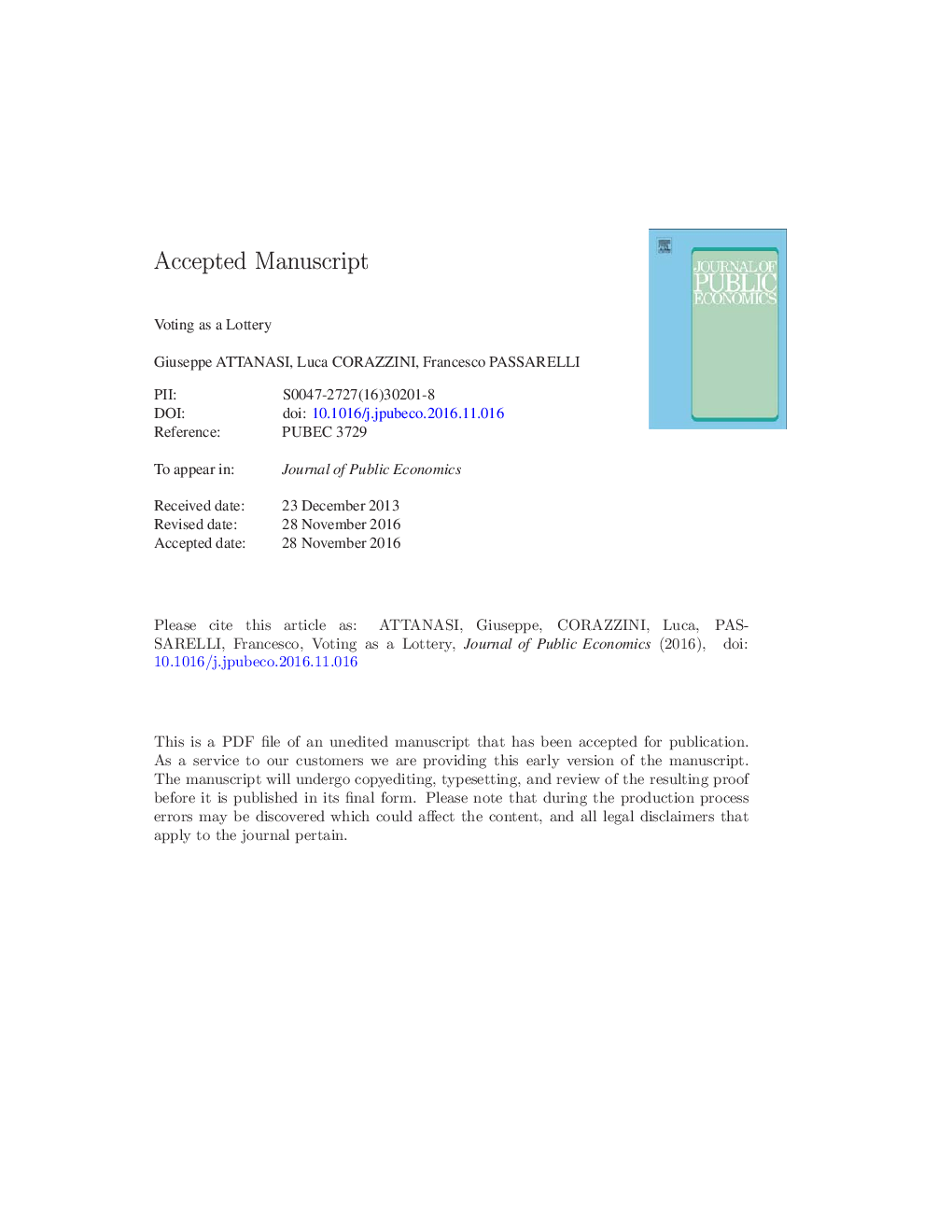| Article ID | Journal | Published Year | Pages | File Type |
|---|---|---|---|---|
| 5101902 | Journal of Public Economics | 2017 | 29 Pages |
Abstract
This paper studies the issue of constitutional design, and supermajorities in particular, from a behavioral economics perspective. The relevant parameters are voting power, risk aversion, and pessimism. Voters who feel powerful prefer lower thresholds, while risk averters and those who feel pessimistic about the majority prefer higher thresholds. We also analyze the effects of loss aversion and overconfidence. The former leads voters to prefer more protective voting rules, a manifestation of their bias towards the status quo. The latter leads them to prefer overly low (high) protection when they receive good (bad) news about how others will vote. Finally, we study constitutional agreements on the voting rule. Members of the constituent assembly are heterogeneous in the parameters above. Weak and minority members anticipate high expropriation risk in future decisions. This gives them consistent leverage to push for a protective constitution.
Related Topics
Social Sciences and Humanities
Economics, Econometrics and Finance
Economics and Econometrics
Authors
Giuseppe Attanasi, Luca Corazzini, Francesco Passarelli,
